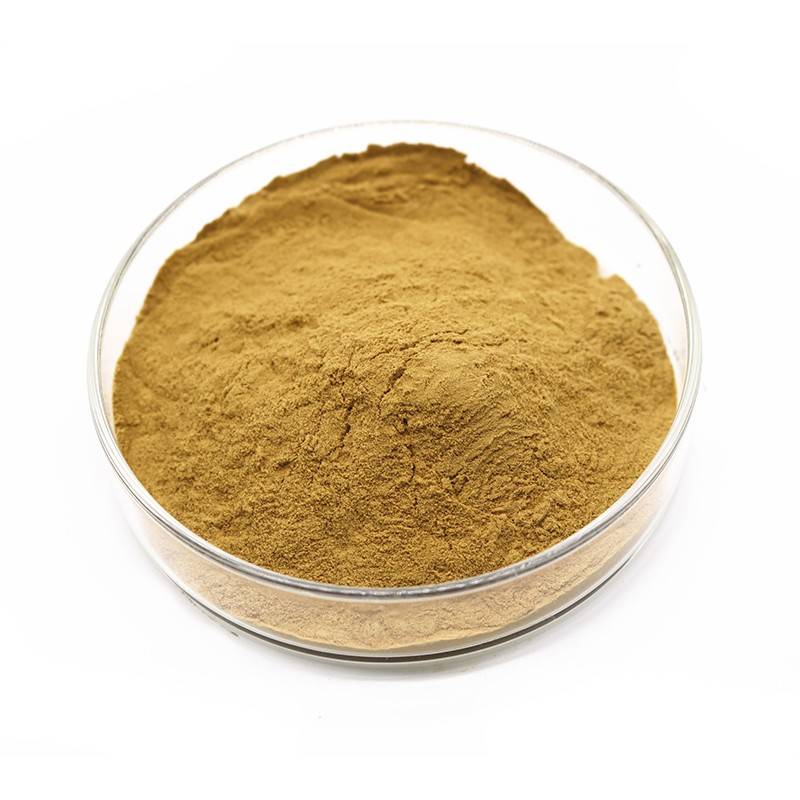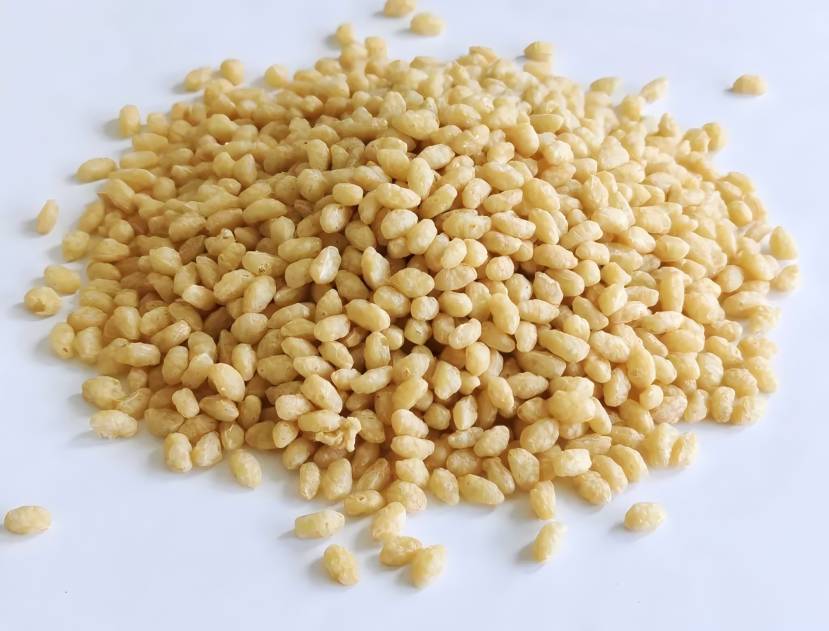What Are the Use of Dandelion and Its Extract?
Dandelion (Taraxacum mongolicum Hand.-Mazz.) is a perennial herb in the family Asteraceae, also known as yellow dandelion or dandelion weed[1]. There are about 2,000 species in the entire genus[2]. Dandelion roots are conical in shape, the leaves are obovate, and the flowers bloom at the tip of the stem. After flowering, the seeds blow in the wind and fall to the ground, where they germinate[3]. Currently, dandelion is a highly nutritious plant with an edible portion of up to 84%, making it one of the most common dual-purpose medicinal and edible plants. Dandelion has three anti-effects: anti-virus, anti-infection, and anti-tumor[4]. In recent years, there has been a dandelion fever sweeping the world. Therefore, this review summarizes the research progress of dandelion extracts in terms of their active ingredients, medicinal uses, applications in beverages and foods, preservation, and feeding, with the aim of promoting the development and utilization of dandelions.
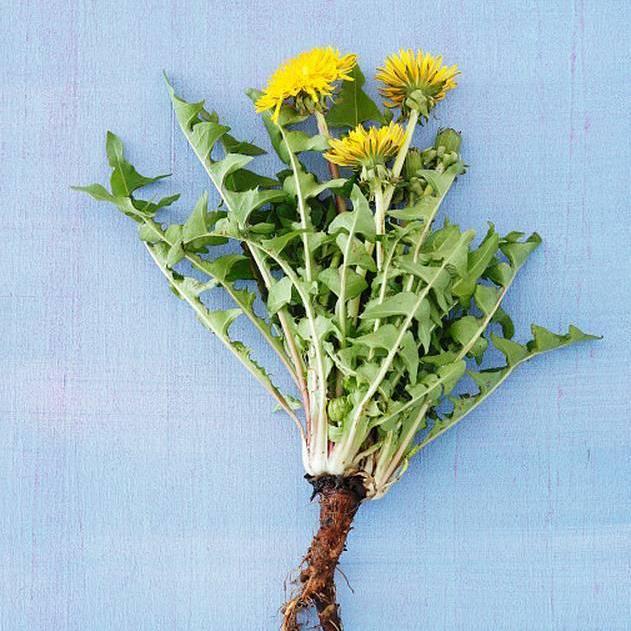
1 Active ingredients in dandelion extracts
1.1 Flavonoids
Dandelion extract contains about 1.35% flavonoids, mainly including more than 20 types of flavonoids such as quercetin, luteolin, quercetin, isorhamnetin and their derivatives, among which luteolin has the highest content. Flavonoids have good antioxidant, antibacterial, antiviral, improve lung function, protect the liver, enhance immunity, delay aging, improve blood circulation[5].
1.2 Polysaccharide compounds
The content of polysaccharide compounds in dandelion extracts in each part of the plant is in the order of root > flower > leaf, with the root part containing 83.31% polysaccharides. Polysaccharides in dandelion not only have strong antioxidant, anti-inflammatory, antibacterial activity, anti-stress, liver protection and other effects, but also have the effect of lowering blood sugar, lowering blood lipids, promoting animal metabolism, immune regulation and so on [6].
1.3 Phenolic acids
Dandelion extract is rich in phenolic acids, the main ones being p-coumaric acid, vanillic acid, cinnamic acid, chicoric acid, caffeic acid, chlorogenic acid, 2,4-dihydroxybenzoic acid, tartaric acid, anhydride, and monocaffeoylquinic acid[7] . Domestic researchers have optimized the optimal conditions for determining phenolic acids in dandelion and measured the total phenolic acid content to be 120.5 mg/g. The phenolic acid content of dandelion leaves is higher, at about 100 times that of the roots[8]. Dandelion phenolic acids have a broad-spectrum antibacterial effect.
1.4 Sterol compounds
Dandelion extracts contain various sterols, such as β-sitosterol, β-amyrin, β-sitosterol, β-D-glucopyranoside, carotenoid, stigmasterol, stigmen-7-ol, pollenane, cyclomarin, campesterol, etc. Sterol compounds have been isolated and identified in various parts of dandelion, and the pollen part contains the most of these compounds. Dandelion sterol compounds have multiple effects, including anti-inflammatory, anti-tumor, anti-aging, treatment of liver and lung damage, and regulation of hormone levels. In addition, sterol compounds can improve the body's immunity, thereby effectively preventing the occurrence of diseases.
1.5 Terpenoids
The terpenoids in dandelion extracts are mainly triterpenoids and sesquiterpenoids. The main triterpenoids are taraxerol, lupenol, β-sitosterol, and taraxasterol [9]. Sesquiterpenoids are the main components of the bitter taste of dandelion. Sesquiterpenoids mainly include dandelion bitter acid, sonchuside A, dandelionin B, and p-hydroxyphenylacetic acid [10]. Dandelion terpenoids have anti-inflammatory, anti-tumor, antibacterial, immune-modulating, and cholesterol-lowering effects [11].
2 Dandelion applications
2.1 Medicinal aspects
2.1.1 Bacteriostatic
Studies have shown that adding 50% dandelion decoction to the culture medium results in a final concentration of 10%, and the plate method is used for testing. The results show that dandelion has a bacteriostatic effect [12]. In addition, dandelion also has a significant inhibitory effect on common infectious bacteria, gram-positive and gram-negative cocci, etc. [13]. Researchers have found that dandelion hot extract can inhibit cell wall synthesis to achieve the effect of bacteriostasis.
2.1.2 Anti-cancer
In terms of anti-cancer, dandelion has a certain therapeutic effect. Dandelion extracts such as selenium and polysaccharides can effectively inhibit the proliferation of tumor cells and reduce the adverse reactions of antitumor drugs. Experimental studies have shown that dandelion polysaccharides have a certain inhibitory effect on MM46 tumor cells, and both its aqueous and methanolic extracts have significant antitumor activity. Domestic researchers have found that dandelion decoction has a certain anti-mutagenic ability. Other researchers have also found in experiments that dandelion root extract can significantly inhibit skin tumors in mice and effectively resist chemical carcinogenesis.
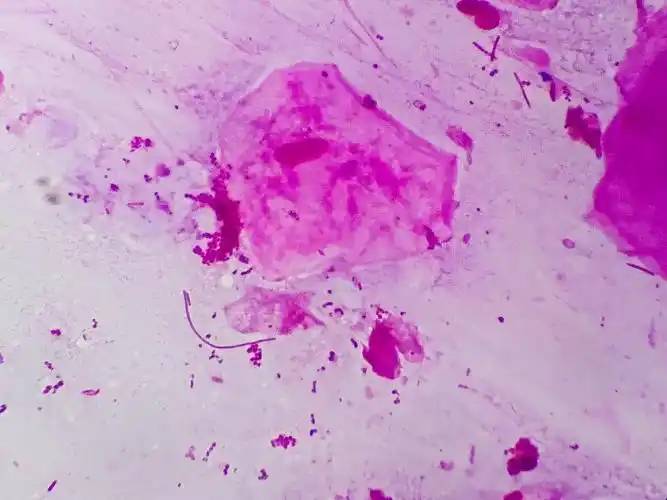
2.1.3 Antioxidant
The chlorogenic acid in dandelion has antioxidant properties, and the flavonoids are similar to SOD, which can effectively scavenge superoxide anion radicals and hydroxyl radicals and inhibit the oxidation of unsaturated fatty acids. Yang Zihui et al. [14] confirmed in their research that dandelion acts on core targets such as HSP90AA1, SRC and PTGS2 through key active ingredients such as dandelion acid and hydroxyl artemisinin. Activation of the signal transduction pathway regulates the balance of oxidative stress and exerts an antioxidant function. It has been confirmed that the water-soluble components of dandelion have stronger antioxidant properties.
2.1.4 Anti-inflammatory
Dandelion's crude extract or decoction has a certain anti-inflammatory effect. Current research on its anti-inflammatory effect mainly focuses on the components of the plant such as triterpenoids, flavonoids, phenolic acids, organic acids and sterols. Some studies have shown that dandelion has a certain curative effect on various inflammatory diseases such as respiratory tract infections, acute tonsillitis, pelvic inflammatory disease, and acute appendicitis, and can effectively prevent colds. Clinical studies have shown that dandelion can also treat mastitis. Mashed dandelion applied to the swollen breast can reduce or eliminate pain in patients.
2.2 Beverages and foods
As people's quality of life improves, they pay more and more attention to their health. Therefore, dandelion, which has a unique flavor, is more popular for its pollution-free and nutritious properties. According to scientific measurements, every 100 g of fresh dandelion greens contains 5 g of carbohydrates, 4.8 g of protein, 1.1 g of fat, 2.1 g of crude fiber, 3.1 g of ash, 7.35 mg of carotene, 47 mg of vitamin C, 10.03 mg of vitamin B, 1.9 mg niacin, 216 mg calcium, 115 mg phosphorus, 10.2 mg iron. Its iron content is among the highest of all wild vegetables. Dandelion has an important function in maintaining metabolic and biochemical activity in the body. It is easy to process and is widely used in drinks and foods.
Ding Lei et al. [15] cleaned, stir-fried, and dried dandelion to make a tea substitute made primarily from natural dandelion. It not only retains the unique aroma of traditional tea, but also allows it to fully dissolve and release during the brewing process. It not only has health benefits such as anti-inflammatory, antibacterial, and sore throat relief, but also satisfies the general tea drinking needs. Liang Xinu et al. [16] used dandelion and monk fruit as the main ingredients and developed a yeast fermentation method to create a health drink with a unique dandelion and monk fruit flavor, a smooth mouthfeel, a long aftertaste, and high nutritional value. Domestic researchers have developed dandelion oat milk. It not only tastes good, but also has beauty benefits. This expands the utilization rate of the raw materials and also provides a broad development space for the development of dandelion and oat milk. Dandelion wine has the effect of clearing away heat and detoxifying, and relieving constipation.
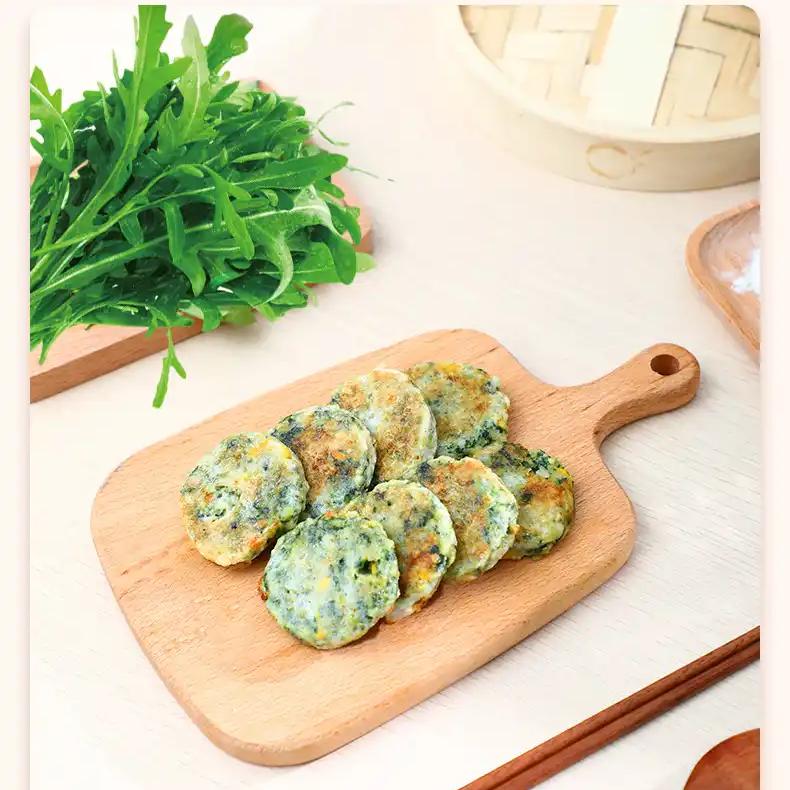
Zhang Chunling et al. [17] conducted research on dandelion and licorice health wine. It tastes mellow, slightly sweet, slightly bitter, and has a lasting aftertaste. It has anti-inflammatory and cough-relieving effects and is a good health wine. Combining dandelion with steamed buns not only retains the traditional production method, but also gives the buns certain nutritional and health benefits, making them suitable for people of all ages and patients with specific conditions. Noodles with health benefits have been a major research area in the field of noodle processing in China in recent years. Domestic researchers have studied the production of dandelion noodles from dandelions and the processing technology. The results show that dandelion noodles have better quality and higher nutritional value. Domestic researchers have studied the production method of dandelion biscuits. Dandelion biscuits are crispy in the mouth and have a light dandelion fragrance. This initiative not only maintains people's eating habits, but also meets people's continued need for healthy food. Dandelion chiffon cake is a new type of modified food. It can reduce the bitterness of dandelion and add a unique flavor to chiffon cake. It is moist and fluffy, and is rich in nutritional value.
2.3 Preservation
2.3.1 Preservation of fruits and vegetables
Dandelion contains chlorogenic acid, which has antibacterial and antiviral functions and can effectively reduce fungal infections. It is also important for the long-term preservation of fruit storage substances and the stability of energy metabolism.
Shen Qi et al. [18] conducted research on the application of dandelion in grape preservation. The results showed that dandelion chlorogenic acid and its inclusion complexes can effectively reduce the weight loss rate of stored grapes, inhibit the mildew of stored grapes, reduce the changes in the content of organic acids and VC in stored grapes, and delay the aging of fruits. Moreover, as the concentration of chlorogenic acid and its inclusion complexes increases, this effect will also increase.
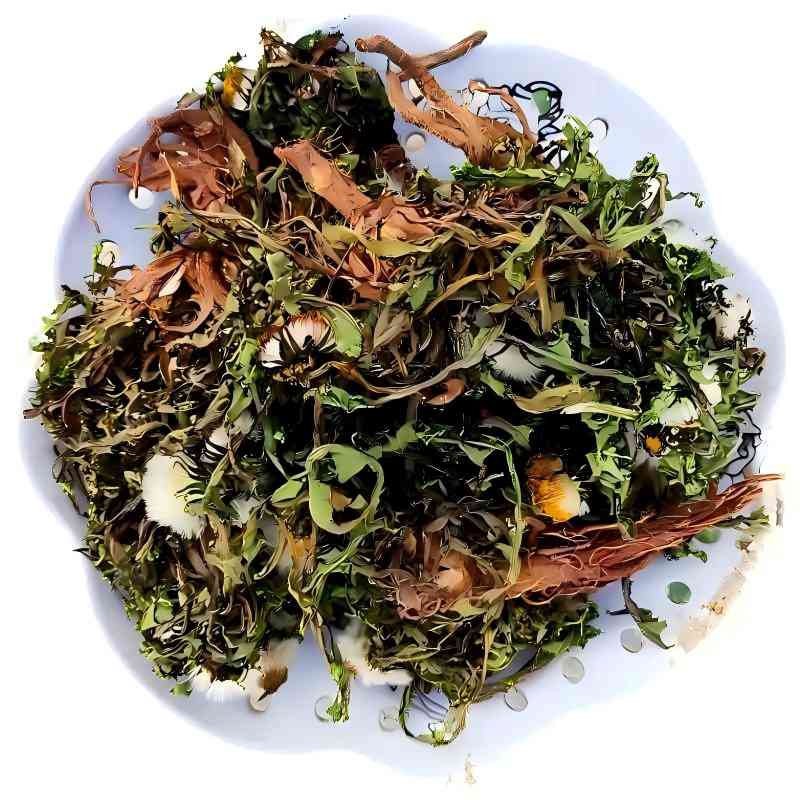
Zhang Yongqing et al. [19] used a 15% dandelion extract solution and distilled water to test the preservation effect on freshly cut lotus root. It was found that during storage, the content of substances such as VC in freshly cut lotus root decreased, the weight loss rate and the L* value of browning increased, thus ensuring the quality of freshly cut lotus root.
2.3.2 Fresh-keeping of meat and egg products
Meat and egg products have high nutritional value, but their short shelf life makes them vulnerable to spoilage during storage and transportation, making it difficult to meet market demand. At present, China's fresh-keeping technology is not yet perfect, and mainly uses low temperature, vacuum, high pressure, coating and other techniques to preserve meat and eggs to extend the fresh-keeping period and ensure product quality. Compared with chemically synthesized preservatives, dandelion extract preservatives have the advantages of being non-toxic, harmless, environmentally friendly, improving preservation effects, reducing residues, and preventing the development of drug-resistant pathogens. They can be used in a wider range of applications[20].
Wang Xiaoying et al. [21] conducted a dandelion preservation test on chilled pork. The results showed that the preservative composed of total flavonoids from dandelion and chitosan had the effects of inhibiting microbial growth, reducing water loss, and extending the shelf life. At the same time, the shelf life of the composite preservative added with total flavonoids from dandelion was also extended accordingly.
He Huili et al. [22] studied the preservation effect of edible dandelion flavonoid-chitosan composite film on chicken breast meat. The results showed that the composite film group could significantly reduce the increase in pH, thiobarbituric acid value and volatile basic nitrogen content of chicken breast meat during storage, thereby inhibiting fat oxidation. At 12 d, the chicken breast meat in the composite membrane group was still edible and retained the aroma of the chicken. This indicates that dandelion flavonoids mixed with chitosan can have good antioxidant and antibacterial effects, which is of great significance for food preservation.
Qin Fengxian et al. [23] studied the preservation effect of dandelion extract on chilled beef. The experiment showed that using dandelion macerate as a composite preservative can effectively extend the preservation time of chilled beef. The optimal concentration of dandelion extract in the composite preservative of chitosan and dandelion is 80 g/L.
2.4 Feed additives
Dandelion is a purely natural green plant that grows all over the country and is a relatively common wild vegetable. It is cold-resistant, drought-resistant and flood-resistant, with tender and juicy leaves. It has the effect of clearing away heat and toxins and protecting the liver and gallbladder.
With the progress of science and technology, a large number of antibiotics have been widely used in various fields to meet human needs for material things. However, in recent years, the overuse of antibiotics has led to antibiotic residues in animal food. Therefore, research on green natural feed to reduce antibiotic residues in feed has become a hot topic of concern. The results show that dandelion can be used as a feed additive to replace antibiotics. It has the advantages of being widely available, low cost, simple operation, strong antioxidant capacity; enhancing immunity, preventing disease, reducing mortality; and improving the quality of livestock products. The use of dandelion as a feed additive can effectively reduce the use of antibiotics and other drugs in feed, and lays a good foundation for the development and promotion and application of plant feed additives.
Li Zhaojia et al. [24] added dandelion to the feed and studied the effect on laying hens. The results showed that adding dandelion to the feed can effectively reduce the cholesterol content of laying hens, increase the lecithin content, improve their nutritional quality and antioxidant capacity, and effectively reduce the heat stress response of laying hens. The mechanism of action is that dandelion contains various effective ingredients such as flavonoids and polysaccharides, which promote the secretion of digestive enzymes and have a certain effect on the production and reproductive functions of laying hens.
Meng Zhimin et al. [25] added dandelion powder to the feed of laying hens for testing. The results showed that the use of dandelion feed additives can effectively reduce the heat stress of laying hens and improve their egg-laying performance.
Wang Chunhua et al. [26] studied the effect of adding dandelion to the feed of fattening pigs to prevent streptococcus suis. The experiment showed that the use of a Chinese herbal medicine mixture composed of dandelion and other seven Chinese herbs to prevent streptococcus suis has a good preventive effect and can be used in veterinary clinical practice.
Yang Rui et al. [27] studied the effect of dandelion extract crude polysaccharides on young rabbits. The experiment showed that dandelion crude polysaccharides can significantly improve the ADG of young rabbits, significantly reduce their F/G value, significantly increase the immune organ index and serum immunoglobulin content, and also have a certain effect on improving immune function. The appropriate addition amount of dandelion crude polysaccharides is 0.5%.
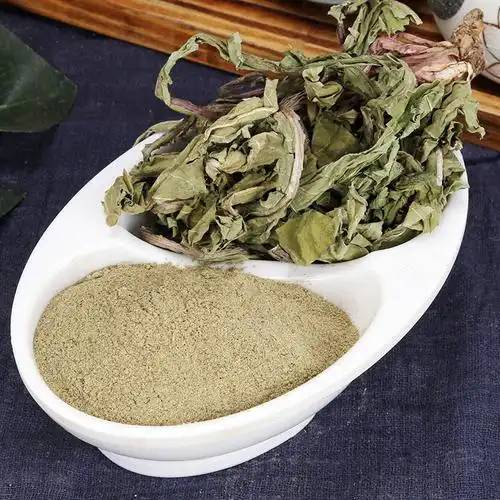
3 Summary
Dandelion is not picky about its growing environment, has strong vitality, is easy to grow and survive, is disease-free, and is rich in vitamin C, potassium, iron and other trace elements the body needs, as well as protein, fat, ash and crude fiber. It is rich in nutritional value and is becoming more and more popular. Dandelion has broad application prospects in medicine, food and drinks, preservation and feed. As a medicinal herb, dandelion can be used to treat a variety of diseases, such as cancer and bacterial infections. As a health food, dandelion has certain nutritional value and can improve immunity. As a preservative, it is non-toxic, environmentally friendly, inhibits the growth and reproduction of microorganisms, delays oxidation and deterioration, and extends the shelf life of food. As a feed additive, it can improve the production performance of livestock and poultry, reduce mortality, save feed, improve animal skin color, supplement nutrition, and improve animal quality. Therefore, more in-depth exploration and research is needed on the value of dandelions, which will provide a theoretical basis for the development and production of various industries.
References
[1] Hou Rongrong, Du Fengtao, Zou Xingyue, et al. Research progress on the active substances and applications of dandelion [J] . Anhui Agricultural Journal, 2019, 25(22): 27-28, 53.
[2] Chen H, Li Y. Research progress on dandelion and prospects for breeding salt-tolerant dandelion with biotechnology [J] . Botanical Bulletin, 2004(01): 19-25.
[3] Jiang Nannan, Zhang Yanan, Ren Ting, et al. Pharmacological effects and development of dandelion [J]. Science and Technology Economic Market, 2015(07): 196.
[4] Zhu Yi. Dandelion root soaked in water, justifiably enters the thermos cup [J]. Popular Health, 2019(10): 84-85.
[5] Li Libo, Meng Dejuan. Biological functions of dandelion extract and its application in livestock and poultry production [J]. Feed Research, 2023, 46(06): 146-149.
[6] Peng Deqian. Research on the chemical composition of dandelion root [D]. Qiqihar: Qiqihar University, 2013.
[7] Guo HJ. Preliminary study on the extraction, isolation and purification, identification and biological activity of dandelion polysaccharides [D]. Shihezi: Shihezi University, 2020.
[8] Liu YF, Liu ZW, Ren YR, et al. Research progress on the chemical composition and pharmacological effects of dandelion and prediction of quality markers [J/OL]. Chinese Journal of Traditional Chinese Medicine: 1-19. http://link.cnki/net/urlid/21.1546.R.20231027. 1355.004.
[9] Shi Aiweng, Yao Jiajing, Wang Qing, et al. Research progress on the chemical composition and pharmacological effects of dandelion and its quality marker prediction analysis [J/OL]. Chinese Journal of Traditional Chinese Medicine: 1-14 [2024-03-18] . http://link. cnki/net/urlid/21. 1546.r.20231108.1528.002.
[10] Meng Ran, Xue Zhizhong, Lu Xuelin, et al. Research progress on the active ingredients and pharmacological effects of dandelion [J]. Jiangsu Agricultural Sciences, 2021, 49(09): 36-43.
[11] Ren Hanshu, Zhu Wenqing, Zheng Yuanyuan, et al. Research progress on the functional ingredients and biological activities of dandelion [J]. Food and Drugs, 2022, 24(02):193-201.
[12] Lin He, Jin Ping, Yang Peiguo, et al. Analysis of antimicrobial peptides from enzymatically digested dandelion [J]. Molecular Plant Breeding, 2020, 18(10):3388-3394.
[13] Guo Junbin, Ye Haihong, Chen Jianfeng. Study on the effect and mechanism of dandelion extract on the proliferation of human liver cancer cells HepG2 [J]. Chinese Materia Medica, 2015, 38(10): 2129-2133.
[14] Yang ZH, Dong Z, Wu HL et al. Analysis of the substance basis and mechanism of dandelion's antioxidant function based on network pharmacology [J]. Journal of Animal Science and Veterinary Medicine, 2023, 54(05):2170-2185.
[15] Ding Lei, Li Xinyang, Liu Jiaxin, et al. Research on the process of dandelion fermented tea [J]. Food Research and Development, 2020, 41(15): 75-79.
[16] Liang Xinru, Zhang Yu, Wen Yunrui, et al. Research and development of dandelion and Luo Han Guo compound beverage [J]. Beverage Industry, 2022 , 25(02) :61-65.
[17] Zhang Chunling, Du Yiwen, Wang Congcong, et al. Development of dandelion liquor with licorice [J]. China Brewing, 2008(11) :99-101.
[18] Shen Qi, Jin Chunyang, Zhang Weiming, et al. Study on the preservation effect of dandelion chlorogenic acid and its complex on grapes [J]. Food Science, 2007(06): 332-335.
[19] Zhang Yongqing, Jiang Yaping, Zhang Jiawen. The preservation effect of dandelion extract on fresh-cut lotus root [J]. Northern Gardening, 2019(19): 75-80.
[20] Pan Siyi, Wang Kexing, Yang Dongxu. Preservation of chilled meat by konjac coating film [J]. Food Science, 2004(08): 177-180.
[21] Wang Xiaoying, Liu Changjiao, Duan Lianhai, et al. Application of dandelion total flavonoid extract in coating fresh pork for preservation [J]. Food Science, 2014, 35(06): 214-218.
[22] He Huili, Ren Xuejiao, Zhang Lili. Preparation of dandelion flavonoid-chitosan composite membrane and its effect on the preservation of chilled chicken breast meat [J]. Food Research and Development, 2022, 43(07): 112-118.
[23] Qin Fengxian, Zhao Jing. Effect of dandelion extract on the preservation of chilled beef [J]. Heilongjiang Animal Husbandry and Veterinary Medicine, 2016(21): 202-204.
[24] Li Zhaojia, Meng Ran, Feng Wei, et al. Effect of dandelion added to feed on production performance, nutritional quality of eggs, serum antioxidant capacity and liver of laying hens [J]. Feed Research, 2022, 45(03): 48-52.
[25] Meng Zhimin, Li Lianque. Research on the addition of dandelion powder to laying hen feed [J]. Feed Research, 2001(01): 33-34.
[26] Wang Chunhua, Zhang Shujie. The preventive and control effect of adding dandelion and other Chinese herbal medicine preparations to the feed of fattening pigs against Streptococcus suis infection [J]. Feed Research, 2015(13): 31-32.
[27] Yang Rui, Li Jinliang, Li Xuting, et al. Effect of dandelion crude polysaccharide on the growth performance and immune function of growing rabbits weaned to 3 months of age [J]. Journal of Animal Nutrition, 2013, 25(11): 2770-2774.


 English
English French
French Spanish
Spanish Russian
Russian Korean
Korean Japanese
Japanese